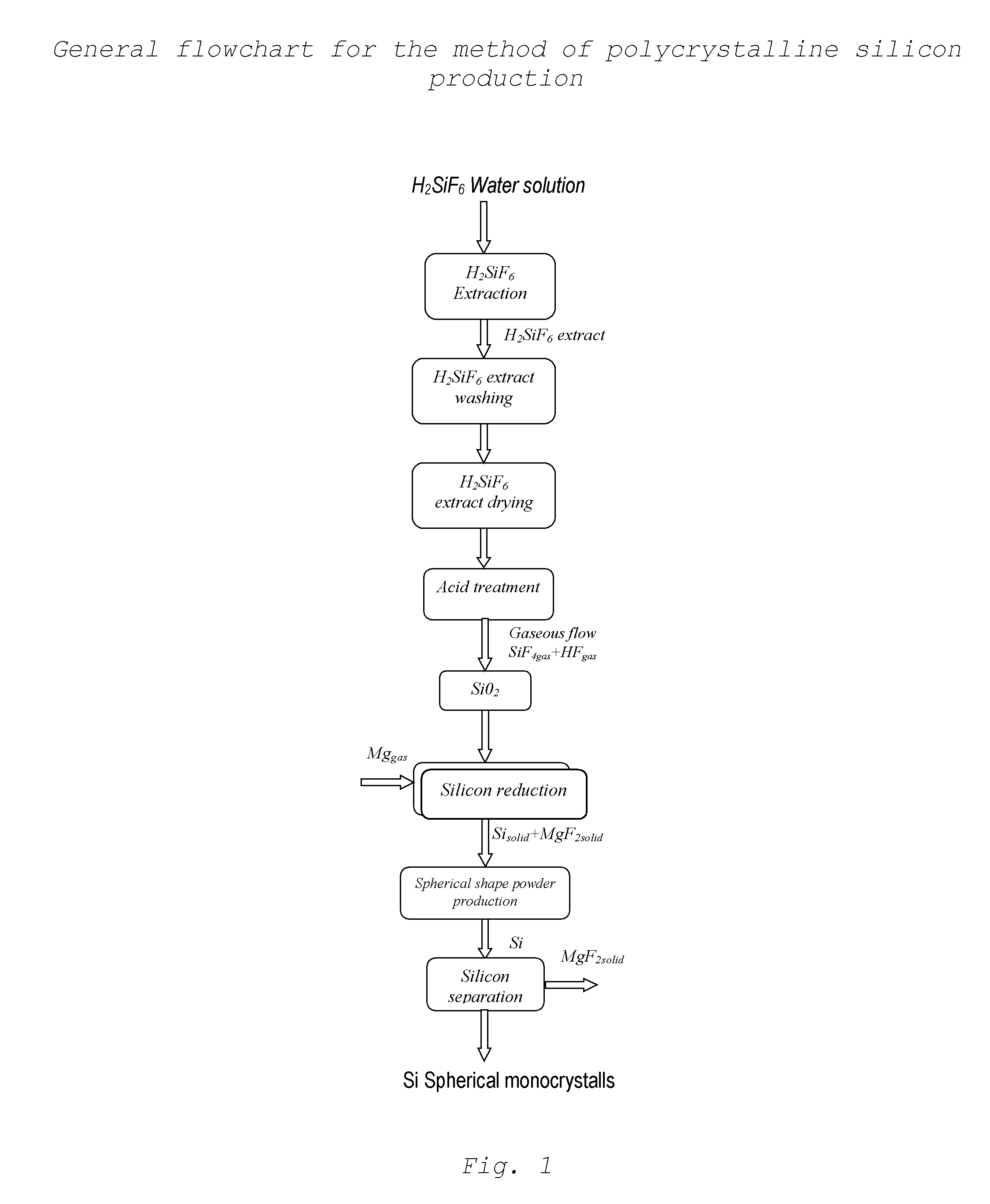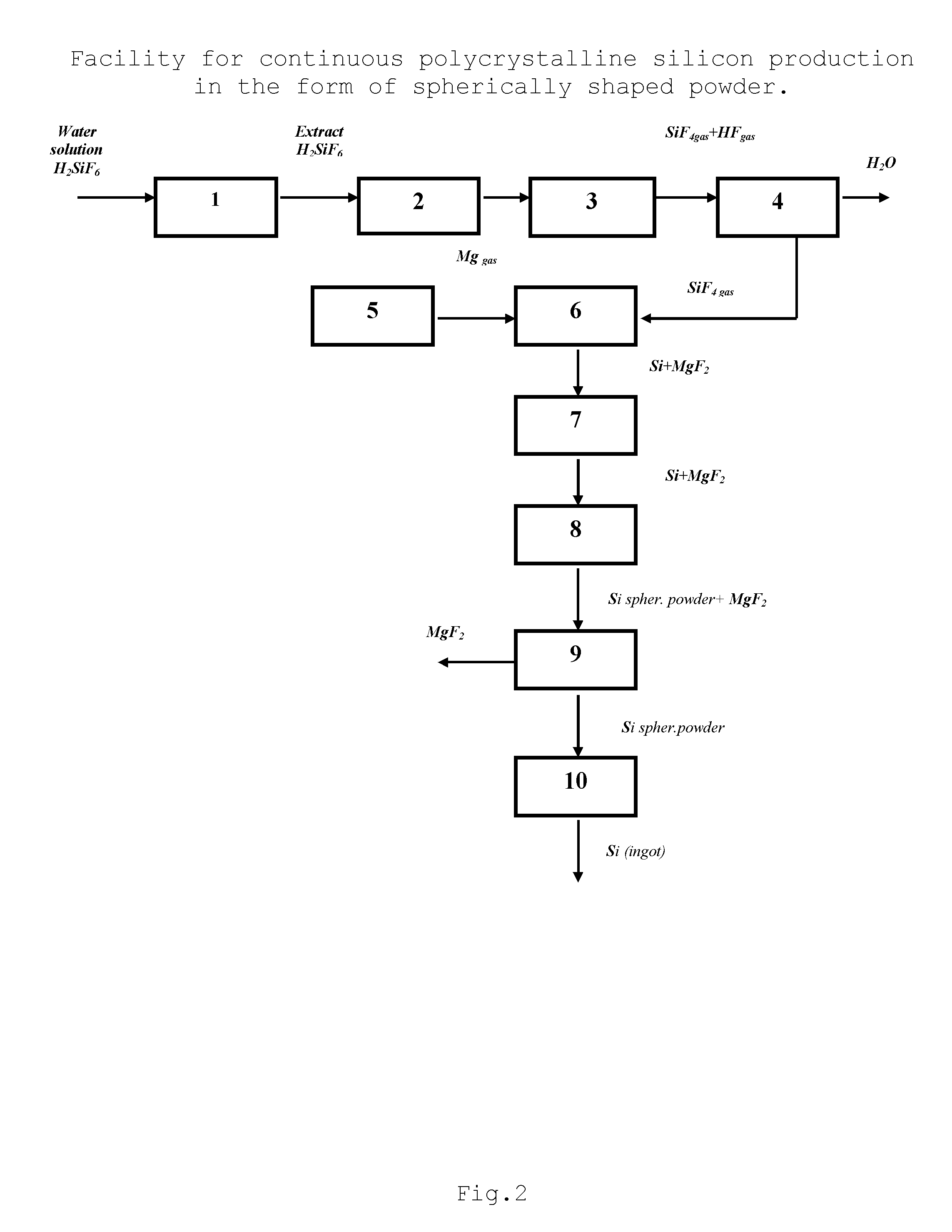Method for producing polycrystalline silicon
a technology of polycrystalline silicon and polycrystalline silicon, which is applied in the direction of silicon compounds, liquid-gas reaction processes, chemistry apparatus and processes, etc., can solve the problems of reducing the growth rate of solar cells, reducing the quality of polycrystalline silicon, etc., to achieve the effect of reducing the cost of primary production
- Summary
- Abstract
- Description
- Claims
- Application Information
AI Technical Summary
Benefits of technology
Problems solved by technology
Method used
Image
Examples
Embodiment Construction
[0074]Production of polycrystalline silicon in the form of spherically shaped powder from fluorosilicic acid solution is preferably to perform in two main technological stages.
[0075]At the first technological stage gaseous silicon tetrafluoride is produced from hydrofluorosilicic acid (H2SiF6) solution in the assembly for silicon tetrafluoride production from hydrofluorosilicic acid solution. This assembly includes the following units joined together by pipeline system equipped with stop valves: unit 1 for extraction of fluorosilicic acid water solution (H2SiF6) that includes at least one centrifugal extractor with protective fluoroplastic covering; unit 2 that provides drying of the extract produced and includes at least one bubbling dryer with protective fluoroplastic covering and equipped with heat-exchange apparatus; unit 3 that provides extract acid treatment with generation of gaseous silicon tetrafluoride and hydrogen fluoride and includes at least one centrifugal extractor w...
PUM
| Property | Measurement | Unit |
|---|---|---|
| temperature | aaaaa | aaaaa |
| temperature | aaaaa | aaaaa |
| size | aaaaa | aaaaa |
Abstract
Description
Claims
Application Information
 Login to View More
Login to View More - R&D
- Intellectual Property
- Life Sciences
- Materials
- Tech Scout
- Unparalleled Data Quality
- Higher Quality Content
- 60% Fewer Hallucinations
Browse by: Latest US Patents, China's latest patents, Technical Efficacy Thesaurus, Application Domain, Technology Topic, Popular Technical Reports.
© 2025 PatSnap. All rights reserved.Legal|Privacy policy|Modern Slavery Act Transparency Statement|Sitemap|About US| Contact US: help@patsnap.com



